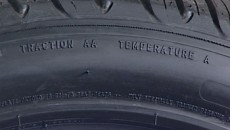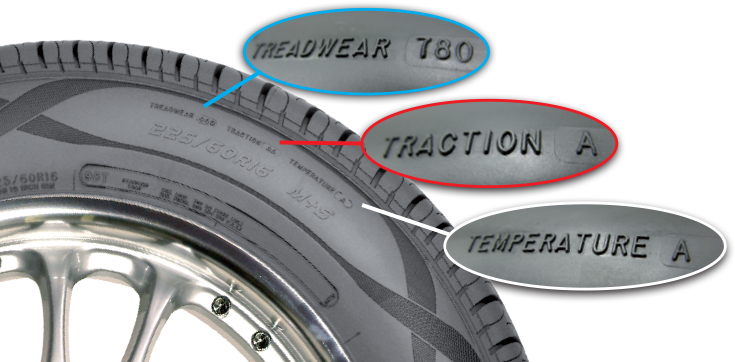Traction Rating Of Your Car Tires: What To Know And How To Interpret
In the last Tyre Guide article, we talked about treadwear ratings of a tire. This time around, we are going to discuss the 2nd parameter of tire performance assigned by Uniform Tire Quality Grading (UTQG), and that is traction rating of a tire.
As mentioned in the previous article, UTQG was made to provide consumers with useful information to help them purchase tires based on their relative treadwear, traction and temperature capabilities. The grades are assigned by the tire manufacturers based on their test results or those conducted by an independent testing company they have hired.
Traction grades, from highest to lowest, are AA, A, B and C, as of 1997. Before 1997, the highest traction grade used to be A. Tires graded “AA” may have relatively better traction performance than tires graded lower, based on straight-ahead braking tests. Traction grades represent the tire’s ability to stop on wet surface (asphalt and concrete). Traction is measured by a series of controlled tests (usually on specified government test surfaces of asphalt and concrete), tire manufacturers and third-party testers use consistent test vehicles in order to determine performance capability. It is important to note that the test and relevant rating does not indicate hydroplaning resistance, dry or snow traction capacity, or cornering capability in wet, dry or snow conditions.
Something else to keep in mind is that these ratings are based on standardized test conditions, and the tests do not reflect tires that are operated in overloaded, under inflated, and/or misaligned conditions. It should also be noted that when rated one tire might be a low “A” and another a high “B”, so the actual operating performance differences might be relatively small.
The traction rating or grade is calculated by installing properly inflated test tires on the instrumented axle of a “skid trailer.” The skid trailer is pulled behind a truck at a constant 65 km/h over wet asphalt and wet concrete test surfaces. Its brakes are momentarily locked and the axle sensors measure the tire’s coefficient of friction (braking g forces) as it slides. Since this test evaluates a sliding tire at a constant 40 mph, it places more emphasis on the tire’s tread compound and less emphasis on its tread design.
As mentioned above, before 1997, the A grade tire used to be the highest traction rating tire available and the grade was awarded to tires that offered wet coefficients of traction above 0.47 g on asphalt and 0.35 g on concrete. Current grades and their traction coefficients are as follows:
The coefficient of friction for the pair, test tire and surface, is determined as the ratio of the longitudinal and vertical forces. During testing, when brakes are applied to the axle, the tire is subjected to shear between the wheels and the surface, and starts to deform towards the back of the tire. This generates a traction force to oppose the motion of the vehicle. The brake force is increased until the tire starts to skid, rather grip. The coefficient of friction rapidly reaches a maximum value at about 10-20 percent slip. But when longitudinal slip values hits 100% (this means tire is completely locked and is continuously skidding), the value of coefficient of friction starts to decrease.
I can understand if this is getting heavier than you were expecting before you started reading the article. And I am pretty sure more than half of the readers might have quit reading by now. So those who are reading these lines, I must congratulate you for making this far. Tires are complex; and there is no other way of putting it. Some aspects of them are easy to understand, like their speed rating or load index, but some of the information can get really confusing and boring for normal users. But I hope you have learned something new today.



Surprisingly EUROSTAR tiers which are used in our local manufactured cars, do not have a manufacturing date or any type of such information ….What are the Pakistan standards for the safety of local people.